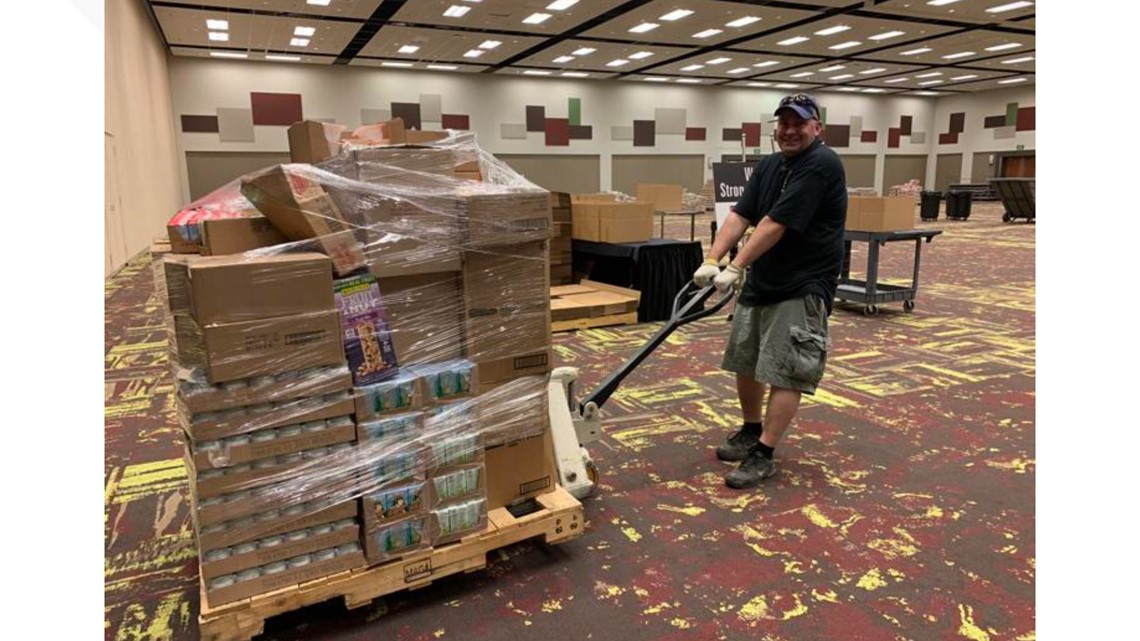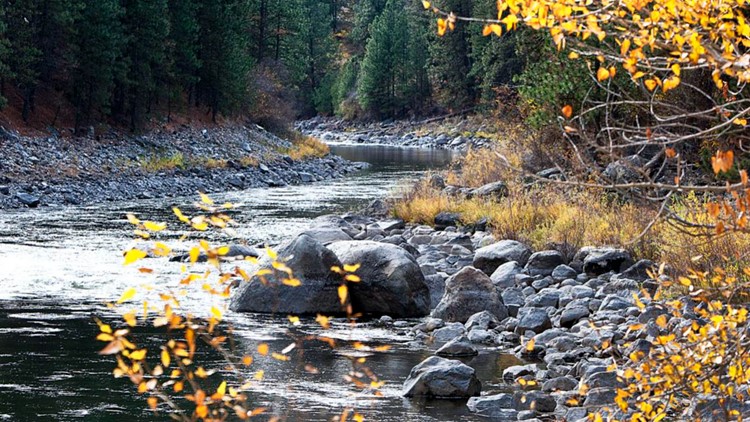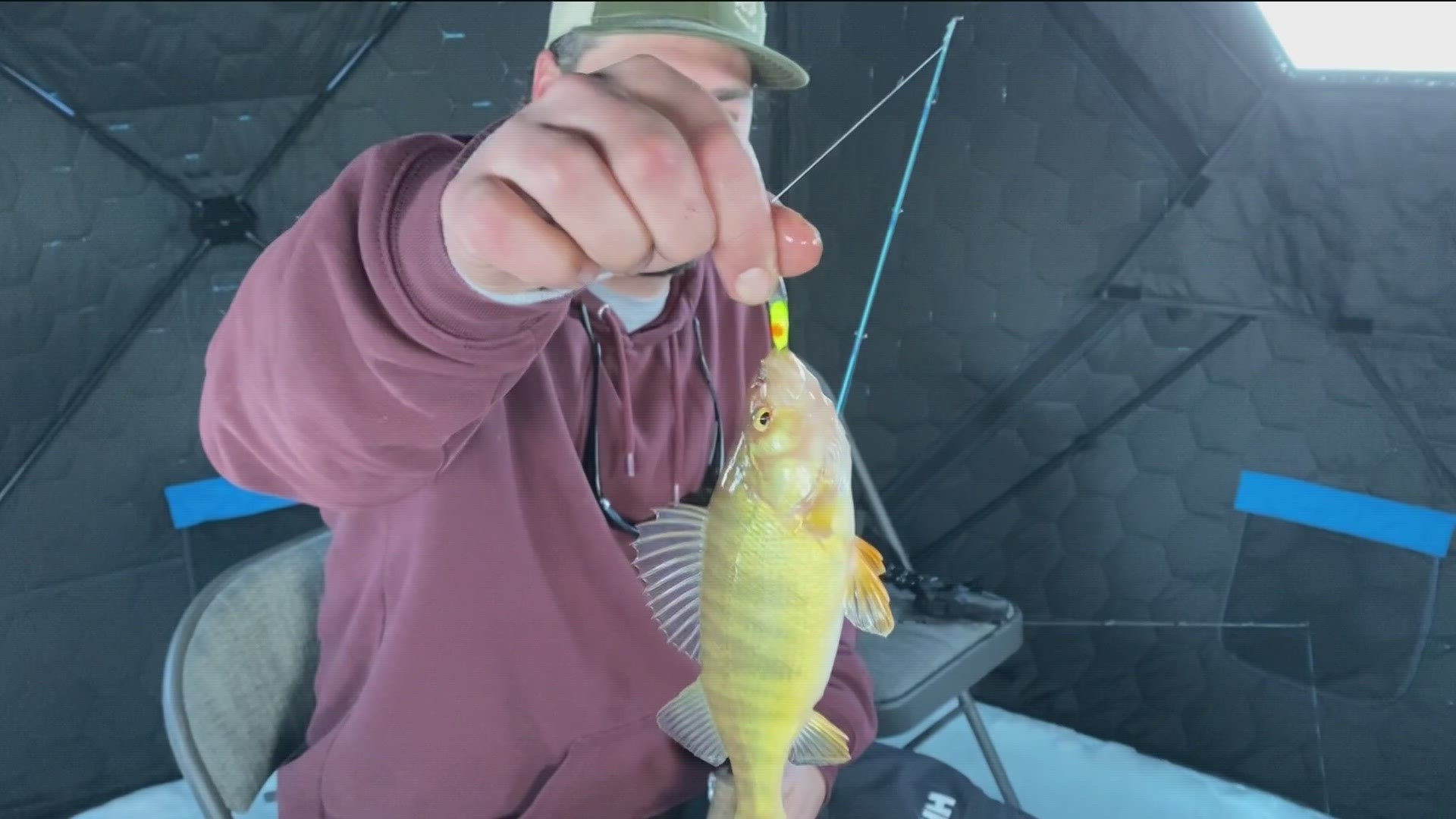BOISE, Idaho — Idaho was just three days into its “Fall for Idaho” tourism promotion campaign when crisis standards of care were declared statewide, due to hospitals overwhelmed with COVID-19 patients — and the state slammed on the brakes.
The marketing campaign was put on pause for a month.
“Things are moving quickly. We’ve had to make a lot of adjustments over the last 18, 19 months,” said Matt Borud, marketing and innovation administrator for the Idaho Department of Commerce. “To understand what was happening, we felt like it was prudent for us to pause the campaign.”
The planned $800,000 fall campaign, which was focused on mostly digital marketing of outdoor Idaho adventures, started Sept. 13, halted Sept. 16, and then restarted Oct. 13. It’s now on track to run right up until the bigger winter tourism marketing campaign, which focuses in large part on the ski season, launches Nov. 8.
The stop-and-start is emblematic of what tourism marketers have been facing around the country and the world since the onset of the COVID-19 pandemic. “We haven’t really been doing the ‘Everybody come to Idaho,’ that kind of thing, really since COVID,” Borud said. “Not very many destinations have. That’s difficult messaging right now.”
Instead, Idaho has focused on marketing its outdoor experiences and road trips, which long have been a big part of Idaho’s tourist appeal. “It’s our bread and butter,” Borud said. “It’s what folks travel to the state primarily to experience.”
It’s been working well: Idaho’s hotel/motel tax revenues, which took a deep hit during the shutdown at the start of the COVID-19 pandemic, have now rebounded to beyond pre-pandemic levels.
“I think Idaho is in a really unique place as far as the tourism dynamic goes,” said Professor Nathan Line, Cecil B. Day Distinguished Professor at Florida State University’s Dedman School of Hospitality. “You have on the one hand the tourism industry, who wants to promote tourism. You have visitors, both in state and out of state, that want to visit Idaho. And then you have a medical community that is completely overwhelmed. And there’s some fine lines there in terms of the extent to which it would make sense to spend money on promoting the state of Idaho extensively, bringing in more people that could potentially be sick and then have nowhere to go. What if they get in a car wreck? It may not be COVID-related at all.”
But Line said it “makes sense” to promote “all the great things that Idaho has to do that are inherently socially distanced,” while also noting COVID protocols. And that’s just what Idaho’s been doing.
“When I think of tourism in Idaho, I don’t think of big sporting events and big cities,” Line said. “As an outsider, if I’m thinking about Idaho, I’m thinking about being outside, I’m thinking about hiking, skiing. … The upside to that is those are activities that tourists can engage in in a relatively safe way. So I think it makes absolute sense to continue to promote tourism in Idaho.”
Tourism is Idaho’s third-largest industry, according to the Idaho Department of Commerce. The U.S. Travel Association estimates that Idaho’s $3.7 billion tourism industry employs more than 45,800 Idahoans.
Borud said Idaho typically has three major tourism promotions a year; fall is the smallest. The winter campaign is budgeted at about $1.1 million; summer is the largest, at $2.8 million. Funding comes directly from the state’s 2% lodging tax.


Like most other business, tourism took a deep dive when the pandemic hit Idaho in March of 2020. But the summer of 2020 became known as the “summer of the road trip,” Borud said, as COVID-conscious travelers avoided flying and other mass transit in favor of staying in their own cars. “That lined out really well for us as well, because road tripping is a big draw for visitors to Idaho,” he said. “It gave us an opportunity to promote our scenic byways” and attractions along the way.
In October of 2020, Idaho’s monthly bed tax collections eclipsed pre-pandemic 2019 levels. “That was the first time we had shown year-over-year monthly growth since the onset of the pandemic,” Borud said. “We were up in October and November, still back down a little in December-January. But really from about February on, we’ve been up.”
For the fiscal year that started July 1, “We’re up 65% over our last fiscal year, and 36% over fiscal year 2019,” Borud said.
The Boise Centre, the convention center in downtown Boise operated by the Greater Boise Auditorium District, saw a huge decline in convention and business travel when the pandemic hit. “Leisure (travel) is what pulled us through the summer-fall of 2020, as well as spring of ’21, and frankly the entire summer,” said Patrick Rice, executive director of the Boise Centre. “Leisure numbers across the state pretty much broke records through the pandemic in eastern and northern Idaho, but not here. Our region saw ... the largest decline in taxable revenues through the pandemic months.”
After everything shut down on March 13, 2020, Rice said the Boise Centre transformed itself into a warehouse and food distribution site for the Idaho Foodbank. It wasn’t until August that it hosted its first convention after that.
Shifting gears as the pandemic worsened in Idaho in the fall of 2020 and limits on the size of gatherings went back into effect, the Boise Centre put together a “virtual studio” to host online conventions. “It was very popular,” Rice said. “The studio was very well-done, and a lot of companies took advantage of it.”
From February through March of this year, with the approval of the local health district, the centre turned to hosting cheer and dance competitions. “We’ve never been a market for that,” Rice said. “We don’t have locker rooms and showers and makeup areas and that sort of thing, but the groups wanted to use the building and they took good care of it.”
This spring, the centre started marketing that it was open, and touting its cleaning protocols, pricey thermal imaging scanners it acquired that can accurately check the temperatures of three people per second, and other COVID safety protocols.
“We give clients the option, whatever protocols they want in place,” while also complying with all local and Centers for Disease Control requirements, Rice said. The Boise Centre was the first business in Idaho to get Global Biorisk Advisory Council (GBAC) accreditation for high-level standards of cleanliness and maintenance, which it received in December of 2020.
Convention business started coming back over the summer, and just over a week ago, the Boise Centre hosted the Boise Metro Chamber’s gala with more than 500 people. At the group’s request, attendees were seated at six-person tables, rather than the standard 10, for more physical distancing.
“We’ve had a few groups fall out this fall,” Rice said, including some national conventions that canceled “just because of the delta variant being what it is.” The Festival of Trees, a big winter holiday event, was called off, as were some local groups’ Christmas parties.
But for the most part, he said, the centre has been busy. Conventions are “not back to where they were in 2019, but I can tell you, 2022, at least on the books, it’s a record year.”
“Everything is a big ‘if’ right now,” Rice noted. “We’ll see what happens.”
Borud said the money that didn’t get spent during the month-long hiatus in the state’s fall tourism marketing program isn’t lost; it just rolls over to later in the year.
“Folks are talking about maybe some La Niña conditions, a little wetter, little warmer, which is sometimes when we have a longer ski season,” he said. “If our ski season stretches into March or even April, that’s one potential use – to maybe extend our winter campaign a little bit.”
Rice said his sales team has been attending trade shows and marketing meetings since June. “Boise is a very, very hot market right now,” he said. “People want to come here.” Conventions already are booking for 2023 and 2024, he said. “2023 is actually starting to look like a really good year already.”
Betsy Z. Russell is the Boise bureau chief and state capitol reporter for the Idaho Press and Adams Publishing Group. Follow her on Twitter at @BetsyZRussell.
Watch more 'Growing Idaho':
See the latest growth and development news in our YouTube playlist:



